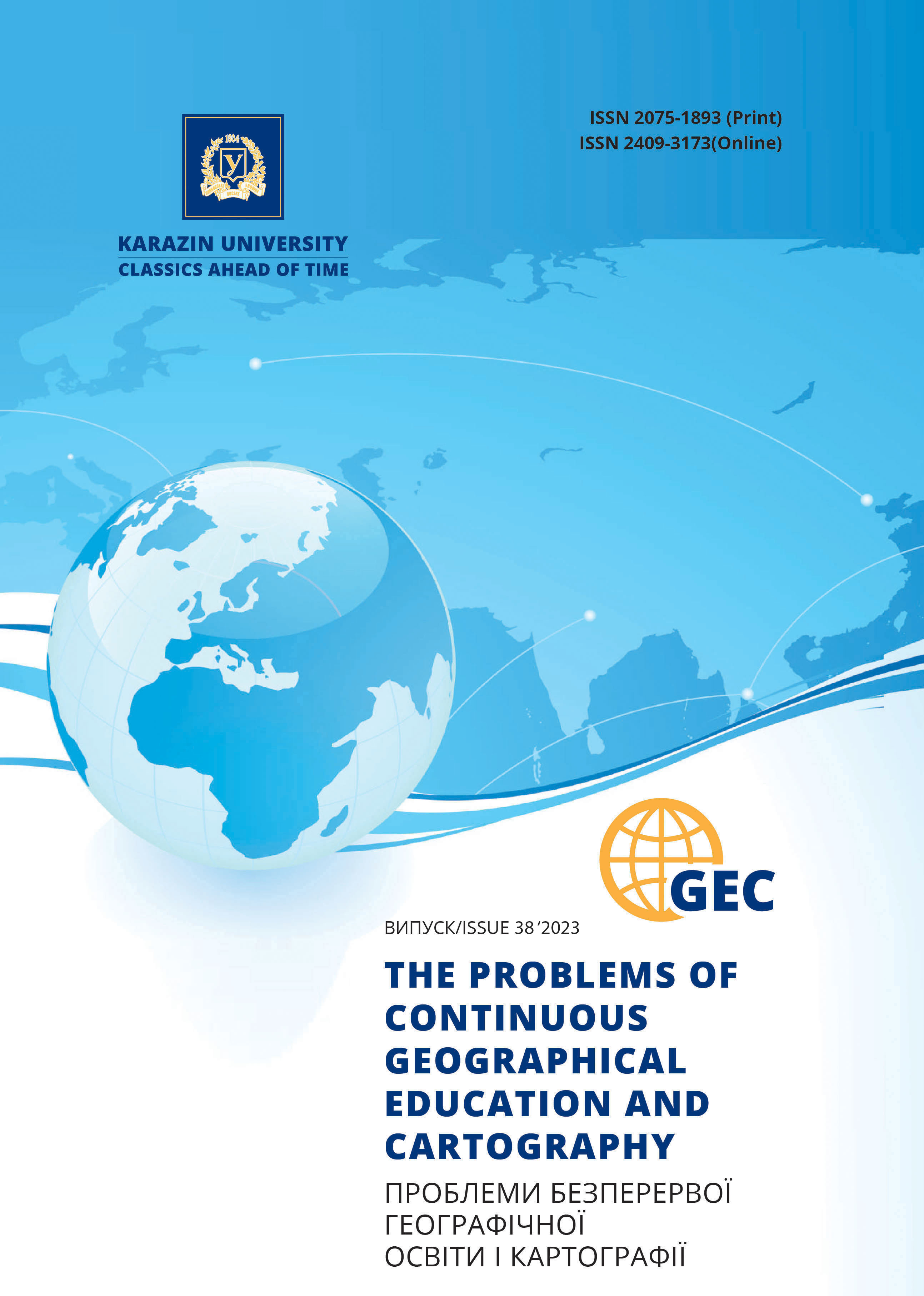Digital model of a historical object in web mapping of post-military objects
Abstract
Purpose of the article. Web mapping is an effective tool that provides clarity and accessibility of information about post-military objects. The aim of the article is to highlight the features of creating and using a digital model of a partially destroyed historical object for the purposes of web mapping post-military objects, using the example of the “Marushka Lis” fort.
The main material. Post-military objects are important elements of historical and cultural heritage and are also interesting tourist attractions. Post-military objects of the Lviv region include various types of military structures from historical periods from the late 19th century to the present. Interactive maps not only show the physical location of objects but also provide comprehensive information about these objects, including textual, illustrative, and graphical materials, 3D models, etc.
In the study of post-military objects, it was found that certain objects are significantly destroyed. The original appearance of such buildings, including now-missing parts, can be conveyed with the help of digital 3D models. This has been implemented by us using the example of the “Marushka Lis” fort, which belongs to the fortification structures of the Przemyśl fortress. The use of laser scanning and the creation of digital 3D models have allowed us to detail its condition, facilitate its virtual study, and restoration. The created model is integrated into the interactive map using web platform Sketchfab.
The digital model of the fort demonstrates the capabilities of modern technologies in preserving and restoring historical objects. Modeling allows us to reproduce the destroyed parts and provides researchers, specialists, and the general public with tools for studying historical architecture without the risk of damaging the objects.
Conclusions. Web mapping of post-military objects shows the significant potential of these technologies for their study, in historical education, and in the development of cultural tourism. The created digital model of the “Marushka Lis” fort serves as a vivid example of the effectiveness of web mapping with an integrated 3D model. This not only helps to increase awareness and educational value but also opens new perspectives for research and preservation of historical objects, including their reconstruction.
Downloads
References
Adamczyk, R. (ed.). (2021). Przemyśl in the Times of the Great War: Studies and Materials. Rzeszów: University of Rzeszów Publishing House [in English].
Neumann, Andreas (2008). Web Mapping and Web Cartography. Encyclopedia of GIS, 1261-1269 [in English].
Austro-Hungarian Army. (n.d.). Available at: https://www.austro-hungarian-army.co.uk/przemysl.html [in English].
Bandylo, N. (2020). Lviv Region. Kharkiv:Folio [in Ukrainian].
CNN Style. (n.d.). Notre-Dame’s last moments: How a fire engulfed the iconic cathedral. Available at: https://edition.cnn.com/style/article/notre-dame-andrew-tallon-laser-scan-trnd/index.html [in English].
Datum Tech Solutions. (n.d.). An extraordinary set of circumstances. Available at: https://datumtechsolutions.com/blogs/news/an-extraordinary-set-of-circumstances [in English].
Dyshlyk, O., Markov, S., Trevogo, I. (2008). Approach to the construction of three-dimensional models of complex spatial objects with the comprehensive use of laser scanning and photogrammetry technologies. Modern Achievements of Geodetic Science and Industry (II), 101-105 [in Ukrainian].
Dorozhynskyi, O.L. (2014). Ground laser scanning in photogrammetry: A textbook. Lviv: Lviv Polytechnic Publishing House [in English].
Historic Building Information Modelling (Hbim): A Review. (2020). Available at: https://www.researchgate.net/publication/338177098_Historic_Building_Information_Modelling_Hbim_A_Review [in English].
Ligne Maginot. (n.d.). Available at: https://www.lignemaginot.com/accueil/indexen.htm [in English].
National Heritage Board of Poland. (n.d.). Twierdza Przemyśl. Available at: https://zabytek.pl/en/obiekty/twierdza-przemysl [in Polish].
Nowak, J. (2015). The Przemyśl Fortress: History and Architecture. Kraków: Historia Iagellonica Publishing [in English].
Odtur. (n.d.). Available at: https://odtur.pl/atrakcje/przemysl-twierdza-przemysl-49991.html [in Polish].
RowerTour. (n.d.). Fortified bicycle route Przemyśl for the weekend. Available at: https://www.rowertour.com/blog/forteczna-trasa-rowerowa-przemysl-na-weekend [in Polish].
Skeiron. (n.d.). Available at: https://skeiron.com.ua/saveukrainianheritage-2 [in English]
Sulik, B., Ivanov, Ye. (2013). Deciphering Post-Military Objects in Aero and Space Images. Physical Geography and Geomorphology, 3 (71), 133-142 [in Ukrainian].
Schultz, R.V. (2012). Theory and practice of ground laser scanning in engineering geodesy tasks: Author’s abstract of the dissertation for the scientific degree of Doctor of Technical Sciences. Kyiv [in Ukrainian].
Wojciechowski, S. (2014). The Przemyśl Fortress: The Last Great Fortress of Austria-Hungary. Poznań: Zysk i S-ka Publishing [in English].

This work is licensed under a Creative Commons Attribution 4.0 International License.





